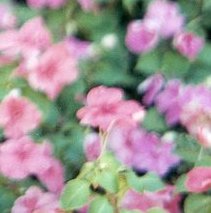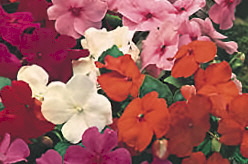growing impatiens, brown leaves on impatiens
Plant Doctor Blog
Please click on ads to support this site.
gardening in india, gardening in new zealand, gardening in south africa, gardening in new south wales,


|
Impatiens are an old standby for shady gardens. In the past,
they went by the name of "busy lizzy" or "patient lucy".
The plants are readily available in six packs in the spring. They can be grown from seeds, but they are not always readily available or easy to start. They
should be planted where they get less than three hours of direct sun, preferably
in the morning hours. Light shade with no direct sun is acceptable. Impatiens
can bloom continously. The plants originated in tropical Africa and can be grown outside only after all danger of frost is past. You can, however, take potted plants inside in the winter. New impatiens can also be produced by rooting cuttings taken from garden plants and brought inside for the winter. The colors are white, pink, red, orange, and purple. The blooms are bright and flowers are abundant. Impatiens should be planted in the front or middle of the bed about a foot apart, and are often grown in hanging pots. The plant grows 8 to 18 inches depending on variety and prefer fertile well-drained soil. Give them a light feeding of liquid fertilizer or compost tea once a month to keep them flowering to the maximum.
New Guinea impatiens are a related plant with larger, darker leaves and more
compact plant making them great for containers. They are usually a little
more expensive but are grown the same.
Impatiens are prone to attacks from slugs, aphids, and even deer.
Impatiens Varieties include:Fusion, Super Elfin Series, Accent Series, Blitz 3000 Series, Fiesta Series (doubles). |